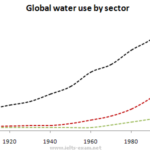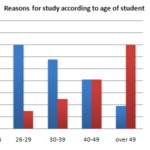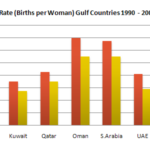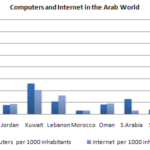The table below shows social and economic indicators for four countries in 1994, according to United Nations statistics.
Describe the information shown below in your own words. What implications do the indicators have for the countries?
- You should write at least 150 words.
- Allow yourself 20 minutes for this task.
| Indicators | Canada | Japan | Peru | Zaire |
| Annual income per person (in $US) | 11100 | 15760 | 160 | 130 |
| Life expectancy at birth | 76 | 78 | 51 | 47 |
| Daily calorie supply per person | 3326 | 2846 | 1927 | 1749 |
| Adult literacy rate (%) | 99 | 99 | 68 | 34 |
model answer:
A glance at four indicators of economic and social conditions in four countries, Canada, Japan, Peru and Zaire, in 1994 reflects the great differences that exist between wealthier and poorer nations.
The table shows that Japan and Canada had annual incomes of $15 760 and $11 100 per person, respectively. These figures were overwhelmingly greater than the corresponding figures of $160 in Peru and $130 in Zaire.
Health indicators, too, reflected overall levels of affluence in the four nations. Life expectancy at birth, for example, was higher among the more economically developed countries. Japan reported the highest life expectancy, 78. This was followed by Canada, 76; Peru, 51; and Zaire, 47; This suggests that richer societies are able to put more money into health care than poorer ones.
The amount of calories consumed daily per person roughly followed the same ranking. Canadians each consumed some 3 326 calories per day while the Japanese took 2846 calories. The corresponding figures for Peru and Zaire were 1927 and 1749, respectively.
Literacy rates among adults, too, were higher in wealthier countries, no doubt a reflection of ability to invest in education. Canada and Japan both reported literacy rates of 99%, while Peru claimed 68%. Zaire, the least economically developed of the four countries, had a literacy rate of 34%.
The data appear to confirm the often cited link between national wealth and health and education standards.
- IELTS Writing task 1-Volume 6-Graphs 51 to 60-(GV6T51-60)
 10 graph samples from Volume 6 , topics 51 to 60
10 graph samples from Volume 6 , topics 51 to 60 - IELTS Writing task 1-Volume 6-Graphs 35 to 50-(GV6T35-50)
 15 graph samples from Volume 6 , topics 36 to 50.
15 graph samples from Volume 6 , topics 36 to 50. - IELTS Writing task 1-Volume 6-Graphs 26 to 35-(GV6T26-35)
 10 graph samples from Volume 6 , topics 26 to 35
10 graph samples from Volume 6 , topics 26 to 35 - IELTS Writing task 1-Volume 6-Graphs 21 to 25-(GV6T21-25)
 5 graph samples from Volume 6 , topics 21 to 25.
5 graph samples from Volume 6 , topics 21 to 25. - IELTS Writing task 1-Volume 6-Graphs 15 to 20-(GV6T15-20)
 6 graph samples from Volume 6 , topics 15 to 20.
6 graph samples from Volume 6 , topics 15 to 20.
